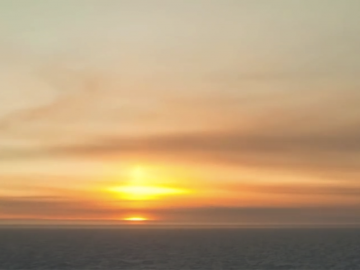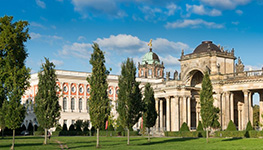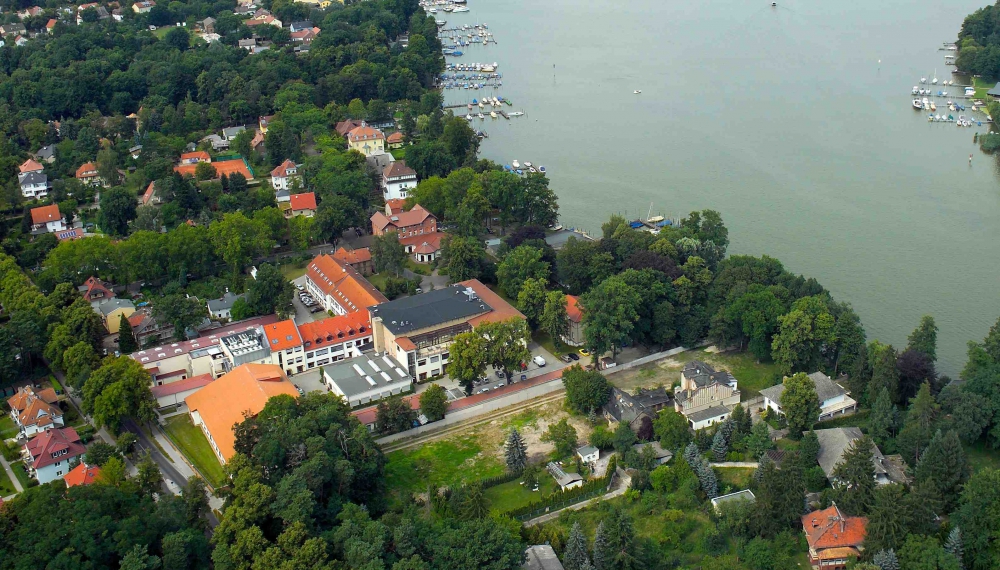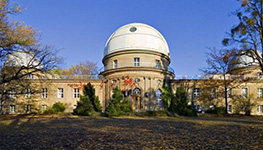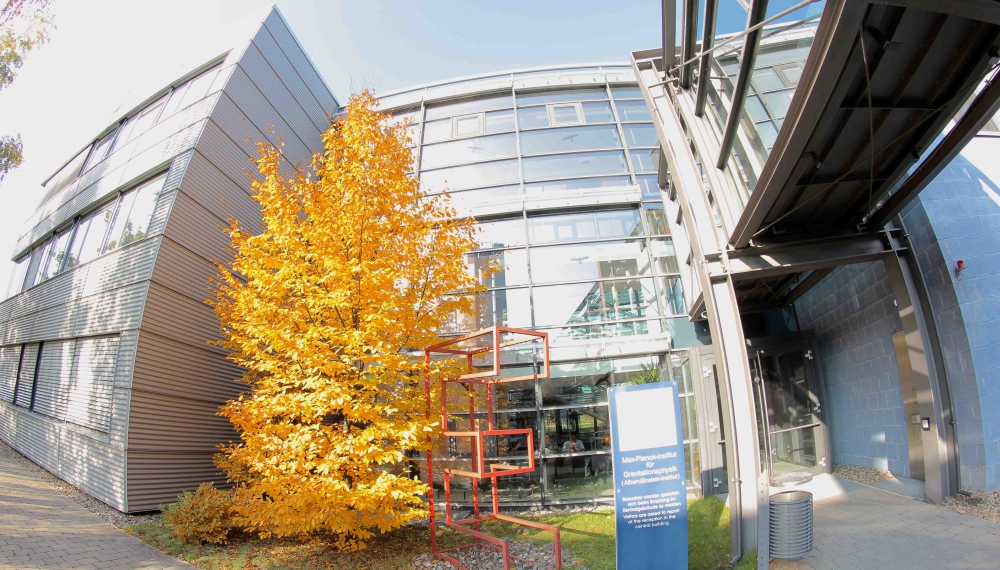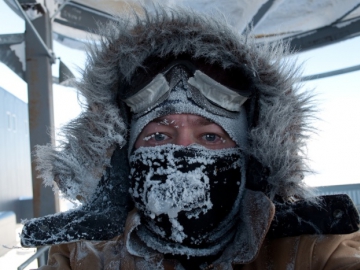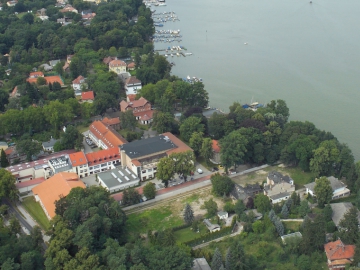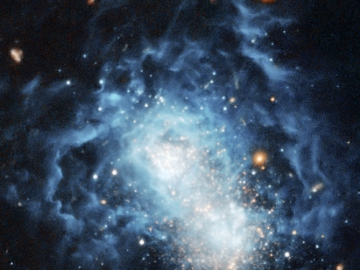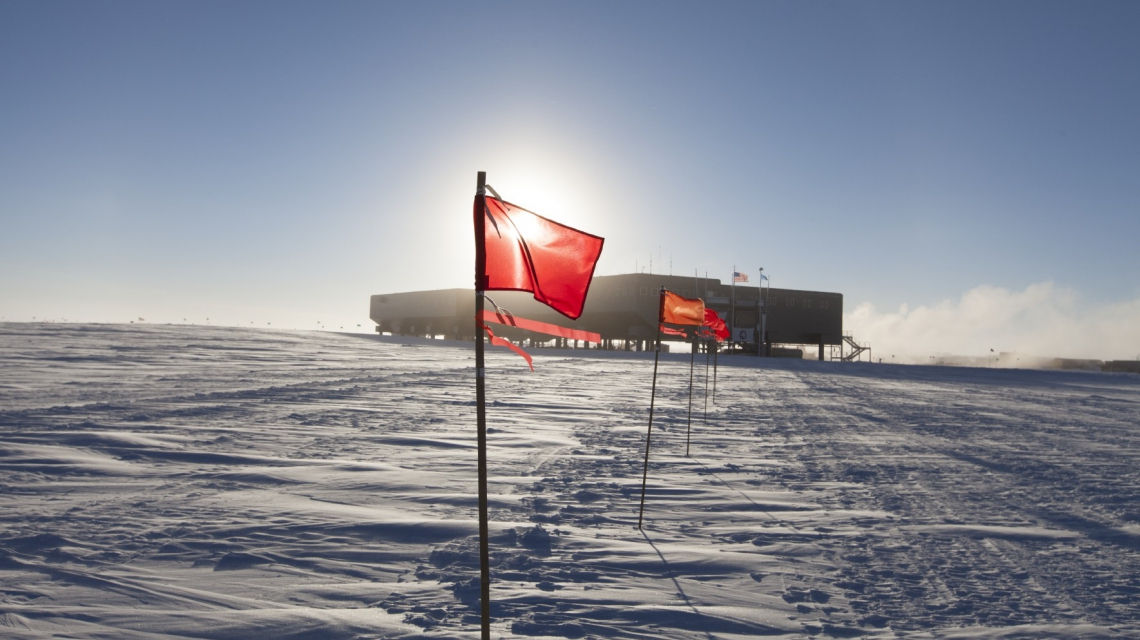
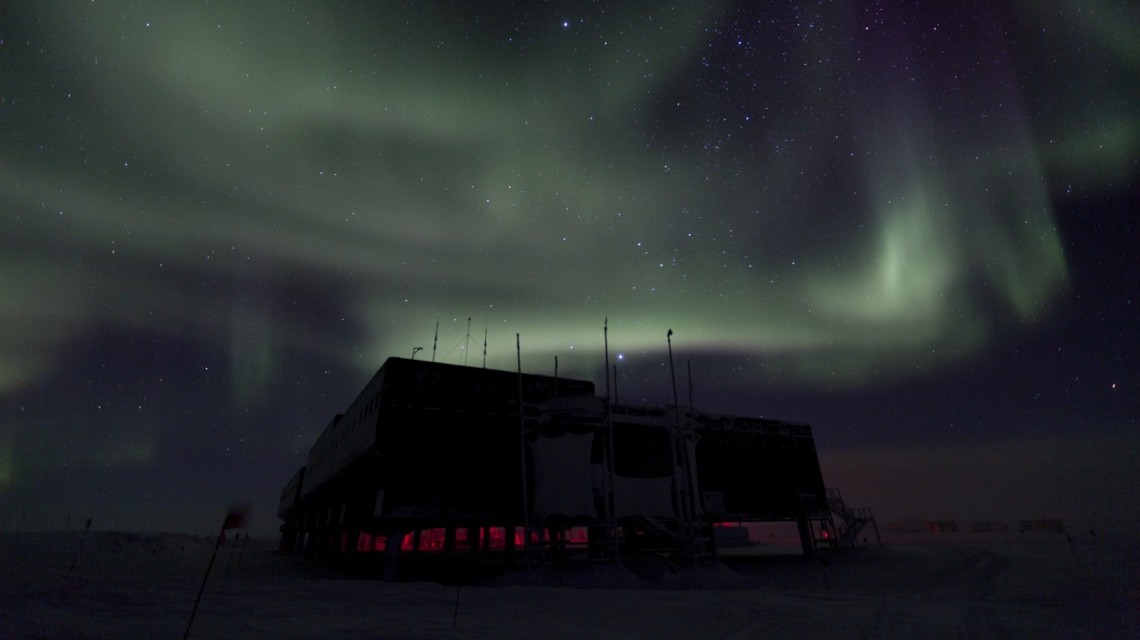
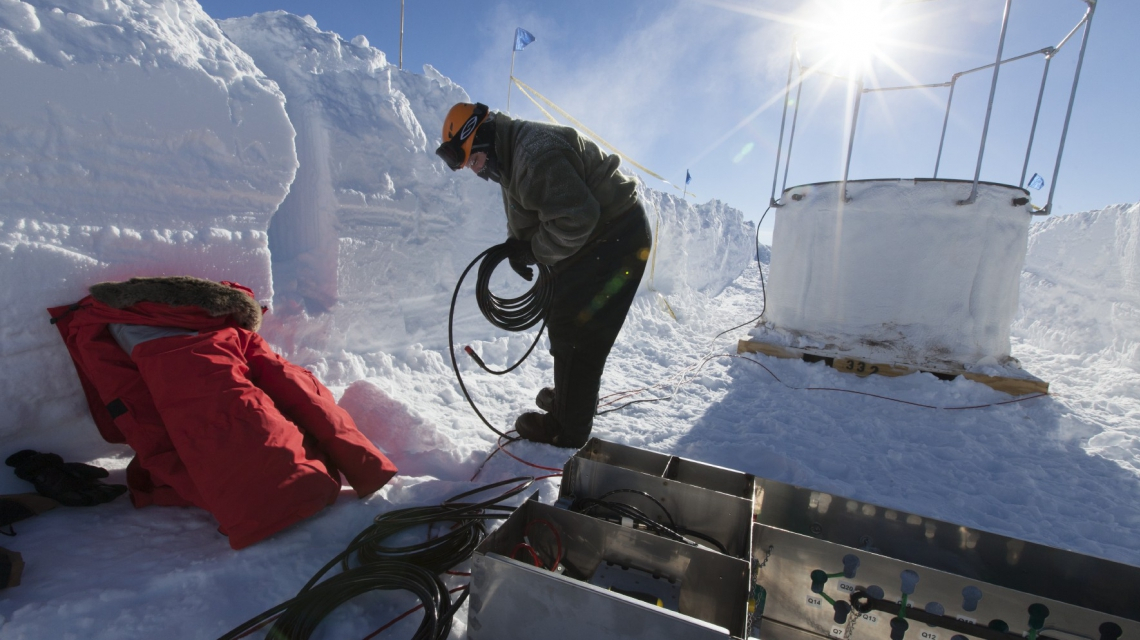
Searching for ghost particles
The Antarctic is certainly the southernmost place of astrophysical research. Here, the IceCube international neutrino telescope is located at an elevation of 2835 meters in the middle of the Antarctic desert of ice, right by the Amundsen-Scott South Pole Station. The Deutsches Elektronen-Synchrotron (DESY) is a partner in the IceCube project.
Neutrinos are extremely light particles that pass matter nearly unaffected and with hardly any interaction. Neutrinos form during fusion processes in the core of the Sun, for instance, or during stellar explosions called supernovae. These ghost-like particles from outer space, which can only be observed through the use of sophisticated, precise and costly detectors in such places as water tanks in mines, or in lakes and oceans — or in the eternal ice.
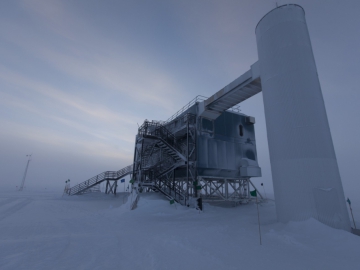
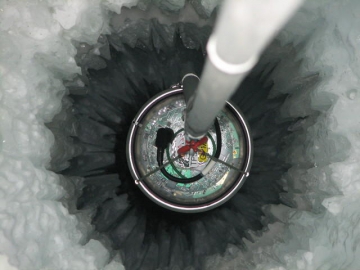
A detector in the ice
An international consortium worked on the construction of IceCube from 2004 to 2010. The technological and logistical challenge was enormous. The neutrino telescope consists of thousands of glass spheres with light sensors, so-called “optical modules”, which are attached to long cables like pearls on a string and which are sealed deep in the polar ice of the Antarctic. For each of these cables, engineers had to drill a hole 2450 meters deep. Exhausting work, requiring an average of 48 hours per bore hole. The construction of IceCube required the continuous support of over 100 people for more than seven years.
Life and work at the South Pole
Working at the South Pole means coping with extreme cold, low air pressure, and very dry air. The main activities take place during the months of the Antarctic summer from November to February. About 150 people are stationed at the Amundsen-Scott South Pole Station during summer. The station provides not only housing space, but also offers sports and leisure facilities — and a surprisingly good cafeteria. DESY researcher Emanuel Jacobi stayed a total of 13 months at the South Pole during the 2010 season; at that time he was actually working for the University of Wisconsin. The time at the Pole impressed him so much that he subsequently applied for a PhD project with IceCube at DESY. Today he is developing software that he hopes IceCube will use to search for magnetic monopoles — the subject of his PhD thesis. Another visit to IceCube is not in the pipeline. Only very few IceCube staff have remained following the construction of the detector. Although visits to the Antarctic are by no means part of day-to-day business, PhD students and postdocs at DESY may have the opportunity to spend a few weeks there.
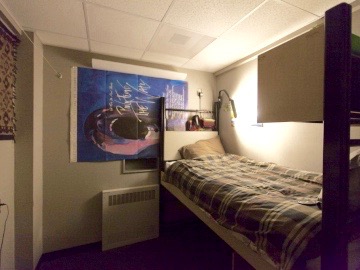
Winterover
During the winter season, only a skeleton crew of about 50 people remain at the station: the “winterover”. The challenge of the extreme climatic conditions is combined with the social challenge of tolerating a long period of time with very few people in a tightly confined space. In winter 2010, Emanuel Jacobi and a colleague from the University of Wisconsin were responsible for maintaining the IceCube detector at the South Pole and keeping its computer stations running and for taking care of data archival. There was no such thing as a regular daily routine for the scientists. If any problems with the detector occurred, they were notified by a satellite pager — day or night. In the case of a hardware problem, this meant that they had to make their way from the station to the IceCube lab — a kilometer away through the cold white winter night, on a marked trail.
Repairs often required improvisation skills. It is impossible to transport anything to or from the South Pole during these months. The temperature, reaching minus seventy degrees Celsius, is too low for airplanes to land. The sunrise after six months announces the forthcoming summer. It is a highly emotional moment for the winterover when the first plane lands – only outclassed by the moment when they themselves sit in the leaving plane and have a last look back to say goodbye to the South Pole.
